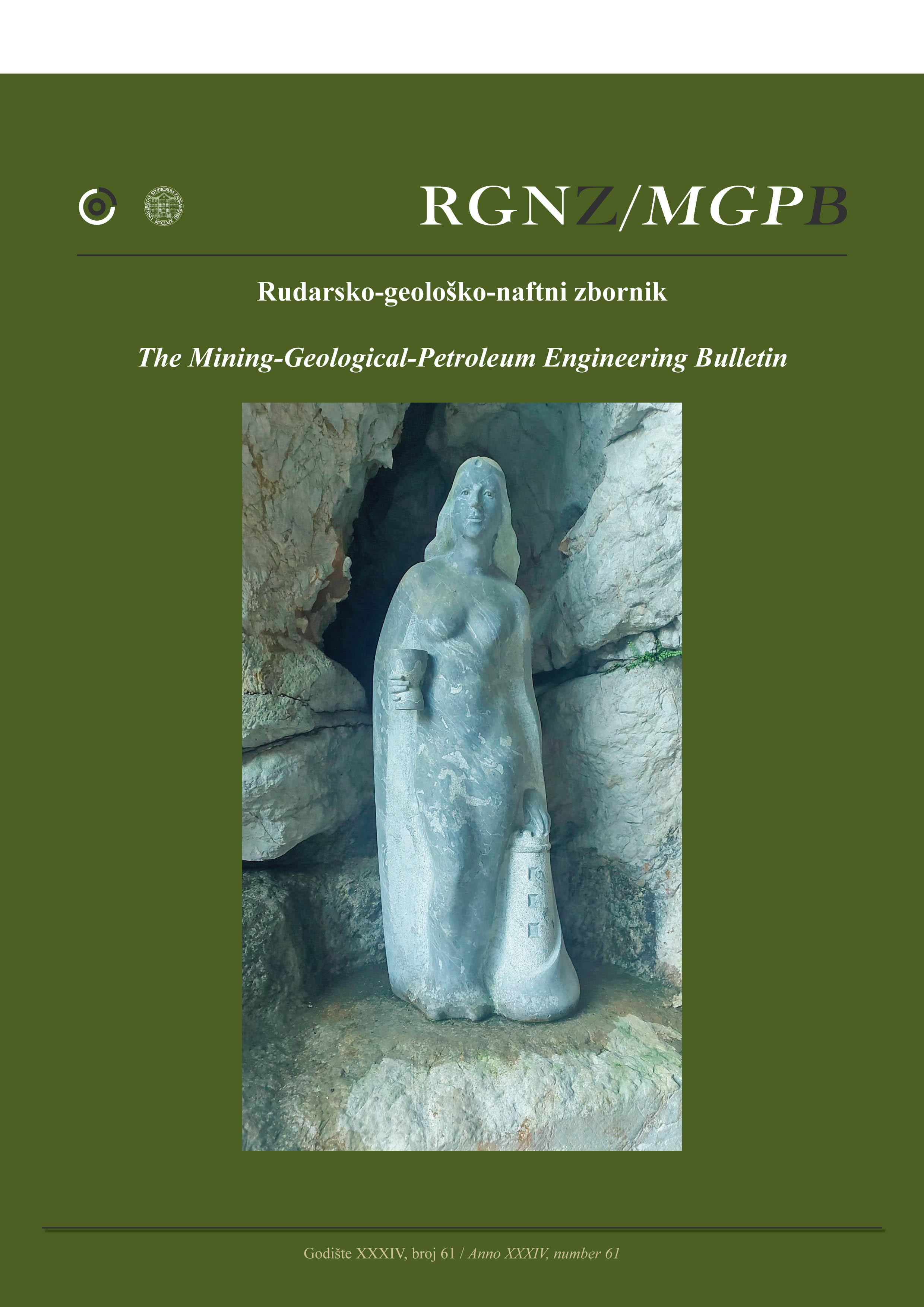Bioprocessing of natural phosphate ore with Staphylococcus aureus bacteria
DOI:
https://doi.org/10.17794/rgn.2022.5.5Keywords:
Staphylococcus aureus, phosphate, bio-flotation, adsorption, apatite, quartzAbstract
Phosphate ores are in high demand around the world because they are the primary raw materials used in the manufacturing of phosphatic fertilizers and other chemicals. Since the grade of the ore is gradually declining, it is becoming economically viable to mine and beneficiate numerous lower-grade deposits, and a significant number of precious minerals are discarded due to the inadequacy of new technological advances. Thus, biological processes are becoming more appealing in mineral processing due to their lower operating costs and potential applications to beneficiate low-grade complex ores through the interaction of bacteria and mineral surfaces, resulting in surface modification and mineral separation via bio-flotation. Staphylococcus aureus was supplied by the mineral bioprocessing lab, CMRDI. Bacterial adhesion measurements revealed a higher affinity for apatite than quartz. A binary mixture containing 12.5% P2O5 and 42.5% SiO2 yielded a concentrate containing 20.15% P2O5 and 33.5% SiO2. Using the bio-flotation process with Staphylococcus aureus and the optimal conditions on natural phosphate ore, a concentrate with 30.25% P2O5 was obtained from a feed containing 21.89% P2O5.
Downloads
Published
How to Cite
Issue
Section
License
Copyright (c) 2022 authors and journal

This work is licensed under a Creative Commons Attribution 4.0 International License.
Creative Commons-BY
Authors who publish with this journal agree to the following terms:
In agreeing this form, you certify that:
- You read the ethical codex of the RGN zbornik available at journal web.
- You submitted work is your original work, and has not previously been published and does not include any form of plagiarism.
- You own copyright in the submitted work, and are therefore permitted to assign the licence to publish to RGN zbornik.
- Your submitted work contains no violation of any existing copyright or other third party right or any material of an obscene, libellous or otherwise unlawful nature.
- You have obtained permission for and acknowledged the source of any illustrations, diagrams or other material included in the work of which you are not the copyright owner.
- You have taken due care to ensure the accuracy of the work, and that, to the best of your knowledge, there are no false statements made within it.
- All co-authors of this submitted work are aware of, and in agreement with, the terms of this licence and that the submitted manuscript has been approved by these authors.
Publication licence
You retain copyright in your submitted work, according to journal license policy (CC-BY). By signing this form you agree that RGN zbornik may publish it under the publication licence. In summary the licence allows the following:
Anyone is free:
- To copy, distribute, display, and perform the work.
- To make derivative works.
Under the following conditions:
- The original author must always be given credit.
- The work may not be used for commercial purposes.
- If the work is altered, transformed, or built upon, the resulting work may only be distributed under a licence identical to this one.
Exceptions to the licence
In addition to publishing the work printed under the above licence, RGN zbornik will also enable the work to be visible online.
The journal editorial can change the licence rules anytime but it cannot retroactively restrict author(s) rights.


